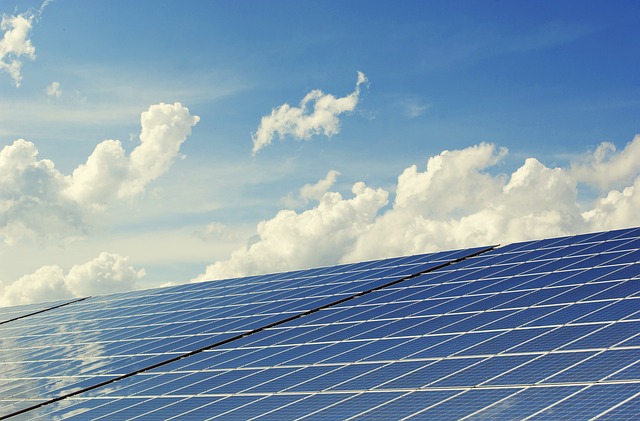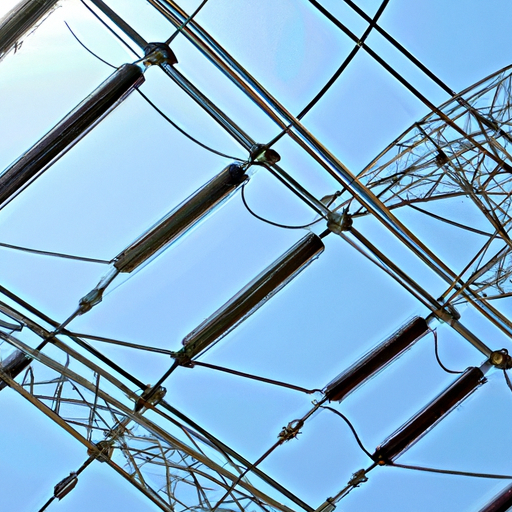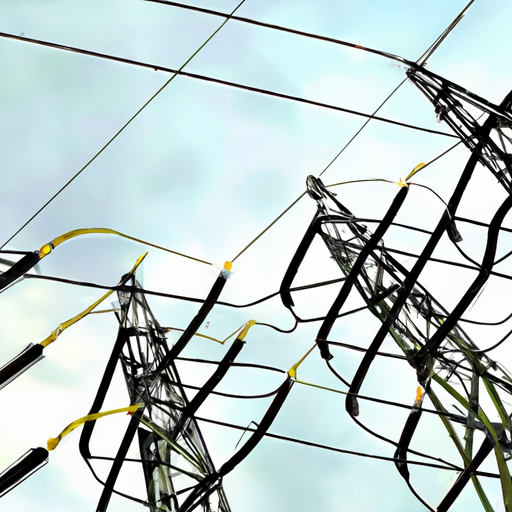Have you ever wondered how to ground your solar system? At HomeSolarDIY, we’ve got you covered! In our upcoming article, we’ll walk you through the step-by-step process of properly grounding your solar system. With our easy-to-understand instructions and helpful tips, you’ll learn everything you need to know to ensure the safety and efficiency of your solar setup.
Grounding is a crucial aspect of any solar system installation, as it protects both you and your equipment from electrical faults and lightning strikes. From understanding the importance of grounding to learning the specific methods and materials required, our comprehensive guide will provide you with the knowledge and confidence to tackle this essential task.
Join us at HomeSolarDIY as we demystify the process of grounding your solar system. Stay tuned for our upcoming article, where you’ll find all the valuable information you need to make your solar journey a success. As always, we’re here to support you every step of the way!

This image is property of pixabay.com.
Understanding Solar Power
Before diving into the intricacies of grounding your solar system, it is crucial to have a basic understanding of solar power and the components that make it up.
Components of a Solar System
A solar system is composed of several key components:
-
Solar Panels: These devices, also known as photovoltaic (PV) modules, convert sunlight into electricity through the photovoltaic effect.
-
Solar Inverter: The solar inverter is responsible for converting the direct current (DC) electricity generated by the solar panels into alternating current (AC) electricity usable in your home.
-
Mounting System: This system supports and secures the solar panels in place. It is typically composed of mounting brackets, rails, and clamps.
-
Wiring and Connectors: The electrical wiring and connectors connect the solar panels, inverter, and other components, allowing for the flow of electricity.
Working Principle of Solar Panels
Solar panels work by utilizing the photovoltaic effect. When sunlight hits the solar cells within the panels, it excites the electrons, allowing them to flow, generating an electrical current. This direct current (DC) is then converted into alternating current (AC) by the solar inverter, making it suitable for powering your home.
Importance of Grounding
Grounding is a crucial aspect of any electrical system, including solar power systems. It serves three primary purposes:
-
Preventing Electrical Shocks: Grounding ensures that any excess electrical current is safely diverted to the ground, reducing the risk of electric shock to individuals.
-
Protecting Equipment: Proper grounding helps protect your solar system components, such as the solar panels and the inverter, from electrical surges and lightning strikes. This helps prevent damage and extends the lifespan of your equipment.
-
Ensuring System Stability: Grounding your solar system helps maintain a stable electrical reference point, reducing the risk of voltage fluctuations and ensuring the efficient and reliable operation of your system.
Why is Grounding Necessary?
Now that you understand the importance of grounding, let’s delve deeper into why it is necessary for your solar system.
Preventing Electrical Shocks
One of the most critical reasons for proper grounding is to ensure the safety of individuals interacting with the solar system. Grounding provides an effective path for electrical current to follow should a fault occur. In the event of a fault, the excess electrical current is safely directed to the ground, reducing the risk of shocks and electrocution.
Protecting Equipment
Grounding plays a vital role in protecting your solar system equipment from various electrical issues. Lightning strikes and electrical surges can cause significant damage to your solar panels and inverter if they are not properly grounded. A grounding system helps divert the excess electrical current into the ground, preventing it from damaging your valuable components.
Ensuring System Stability
Grounding your solar system contributes to the stability and reliability of its operation. By establishing a stable reference point, grounding reduces the risk of voltage fluctuations and surges, ensuring that your system consistently operates at optimal efficiency. This stability is crucial for the long-term performance of your solar system.

This image is property of pixabay.com.
Different Grounding Methods
There are various methods of grounding your solar system, each serving a specific purpose. Let’s explore some of the common grounding methods:
Grounding Electrode System
The grounding electrode system, also known as the grounding electrode conductor, is a key part of the grounding infrastructure. It consists of metal rods, plates, or similar conductive materials buried in the ground near your solar system. This system provides a low-resistance path for electrical current to flow safely into the ground.
Grounding Conductor
The grounding conductor is the wire that connects the various components of your solar system to the grounding electrode system. It ensures that the electrical current can easily flow through the system in the event of a fault, allowing for the safe dissipation of excess current into the ground.
Grounding Electrode
The grounding electrode is the physical component that connects your solar system to the grounding infrastructure. It is typically a metal rod or plate that is securely buried in the ground. The grounding electrode provides a direct path for the electrical current to flow into the earth, preventing damage to your solar system and ensuring the safety of individuals.
Step-by-Step Guide to Grounding Your Solar System
Now that you understand the importance and methods of grounding, let’s walk through a step-by-step guide on how to ground your solar system.
Identifying Local Building Codes
Before starting the grounding process, it is essential to familiarize yourself with the local building codes and regulations. These codes provide guidelines on proper grounding practices specific to your region. Consulting with a professional electrician or solar installer can help ensure compliance with these codes.
Choosing the Right Grounding System
Selecting the appropriate grounding system for your solar array is crucial. Factors such as the size of your system, the location, and the soil conductivity should be considered when choosing the grounding method and materials. It is recommended to consult with a licensed electrician or solar professional to determine the most suitable grounding system for your specific needs.
Determining Grounding Electrodes
Once you have chosen your grounding system, the next step is to determine the location and number of grounding electrodes required. The grounding electrodes should be spaced adequately and strategically positioned to maximize the effectiveness of the grounding system. This step may involve conducting soil tests to assess the soil’s conductivity.

This image is property of pixabay.com.
Preparing for Grounding
Before beginning the grounding process, it is essential to prepare your solar system and the surrounding area.
Inspecting Solar Panels
Thoroughly inspect the solar panels for any signs of damage or wear. Ensure that all electrical connections are secure and in good condition. If any issues are found, it is recommended to address them before proceeding with the grounding process.
Locating Ground Rod
Locate the position where the grounding rod or rods will be installed. This should be a spot near your solar system that is easily accessible and in close proximity to the grounding conductor. It is important to choose a location where the rod can be securely buried, ensuring long-term performance.
Ensuring Proper Wire Sizing
The grounding conductor wire must be appropriately sized to handle the electrical current in the event of a fault. Consult the local building codes or seek guidance from a licensed electrician to determine the correct wire size for your system. Using the wrong wire size could compromise the effectiveness of the grounding system and pose safety risks.
Grounding Techniques
With your solar system prepared and the grounding infrastructure in place, it’s time to move onto the grounding techniques.
Bonding Solar Modules
Proper bonding of the solar modules ensures that all metal components, such as the frames and mounting systems, are electrically connected. This bonding prevents the buildup of potential differences that could lead to electrical hazards. Consult the manufacturer’s guidelines for specific instructions on bonding your solar modules.
Connecting Solar Inverter to Grounding Electrode
Next, connect the solar inverter to the grounding electrode system using the grounding conductor wire. Follow the manufacturer’s instructions for the specific connection method. It is crucial to ensure a secure and proper connection to facilitate the safe dissipation of excess electrical current.
Grounding Equipment Enclosures
If your solar system includes electrical enclosures or junction boxes, it is important to ground these components as well. This involves connecting the enclosures to the grounding conductor using appropriate grounding terminals. Properly grounding the enclosures helps protect the internal components and facilitates the safe dissipation of any electrical faults.

Testing the Grounding System
Once the grounding is complete, it is essential to test the effectiveness of the grounding system to ensure its functionality and compliance with safety standards.
Using a Grounding Resistance Tester
A grounding resistance tester, also known as an earth resistance tester, is used to measure the overall resistance of the grounding system. This test helps identify any potential issues, such as high resistance or faulty connections, that could compromise the effectiveness of the grounding system. Follow the device manufacturer’s instructions for proper usage.
Ensuring Proper Grounding Continuity
In addition to measuring the resistance, it is important to ensure proper grounding continuity throughout the entire solar system. This involves inspecting all connections, including the bonding of solar modules, the connection of the solar inverter to the grounding electrode system, and the grounding of equipment enclosures. Any loose or faulty connections should be addressed promptly to maintain the integrity of the grounding system.
Common Grounding Issues and Solutions
While proper grounding is essential, certain issues may arise that require attention. Here are some common grounding issues and their solutions:
Corrosion of Grounding Components
Over time, grounding components, such as the grounding electrode or the connections, may corrode due to exposure to the elements. Regular inspections and maintenance can help identify any signs of corrosion. If corrosion is detected, the affected components should be promptly replaced to maintain the effectiveness of the grounding system.
Improper Installation of Grounding Conductors
Improper installation of grounding conductors, including using the wrong wire size or inadequate connections, can compromise the grounding system’s functionality. Consulting a licensed electrician or solar professional during the installation process can help ensure that the grounding conductors are installed correctly and in compliance with safety standards.
Insufficient Grounding Resistance
High grounding resistance can hinder the effectiveness of the grounding system, making it less capable of safely dissipating electrical faults. Conducting regular tests using a grounding resistance tester can help identify any high resistance issues. In such cases, additional grounding electrodes may need to be installed to improve the system’s performance.

Maintenance and Inspection
To ensure the long-term safety and effectiveness of your grounding system, regular maintenance and inspections are necessary.
Regular Cleaning and Inspection
Periodically inspect the grounding components, such as the grounding electrode system and the grounding conductor, for any signs of damage, corrosion, or wear. Clean the components as needed and promptly address any identified issues.
Retesting Grounding System
Regularly retest the grounding system using a grounding resistance tester to ensure that the system’s resistance is within acceptable limits. This testing helps identify any deterioration in the grounding system and allows for timely repairs or upgrades as needed.
Conclusion
Proper grounding is a critical aspect of any solar system, ensuring the safety of individuals and protecting the equipment. By following the step-by-step guide outlined in this article, you can confidently ground your solar system, maintaining its efficiency and reliability.
At HomeSolarDIY, we are committed to equipping you with the knowledge and skills necessary to navigate the world of solar power. Grounding your solar system is just one piece of the puzzle in your journey towards a more sustainable future. Through our comprehensive resources, supportive community, and expert insights, we aim to empower you to make informed decisions and actively contribute to the transition to renewable energy.
Join us at HomeSolarDIY, and together, let’s build a greener and brighter future.

